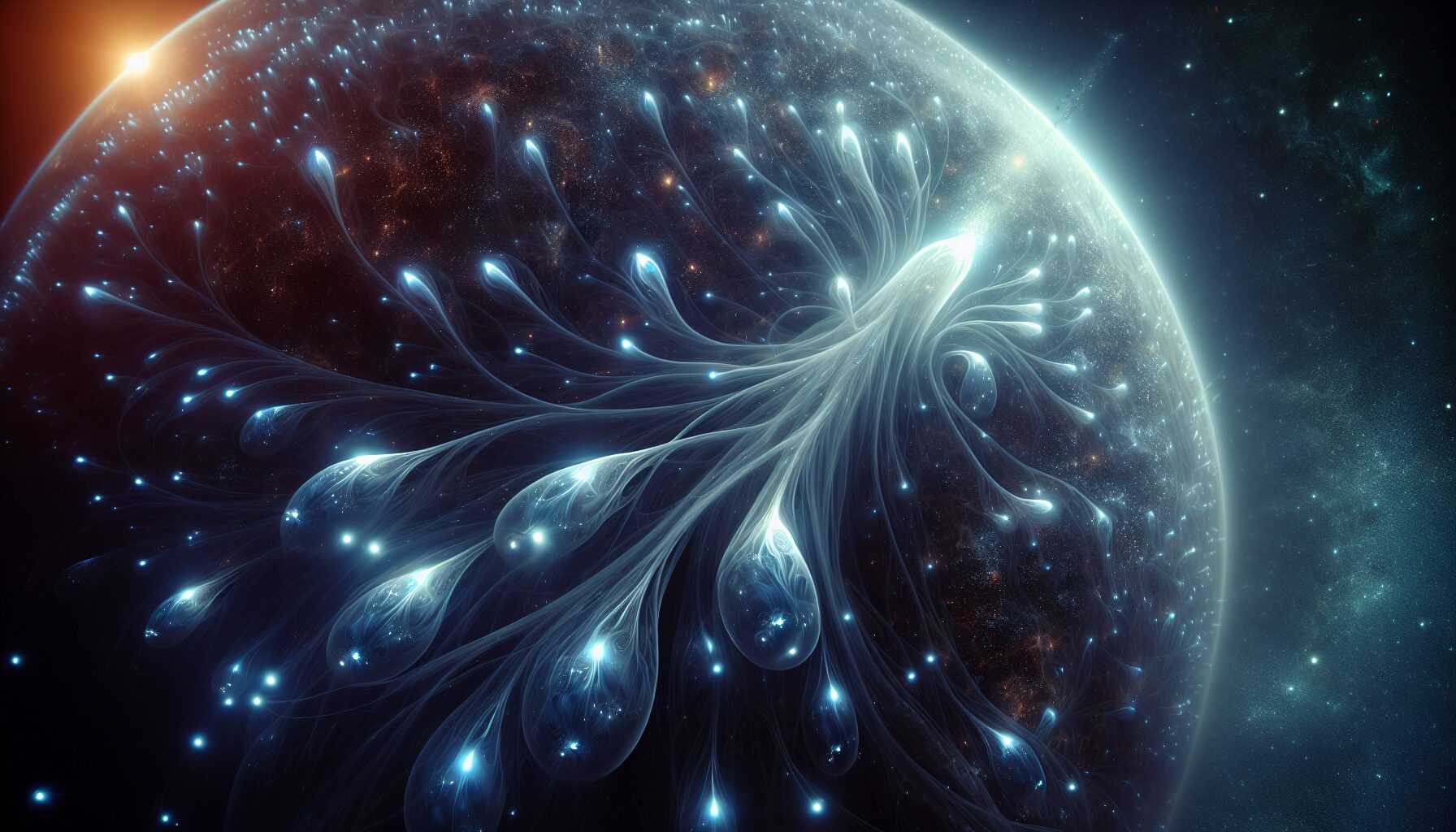Life After Stars: Imagining Consciousness in a Cold Universe
For millennia, the night sky has been a tapestry of glittering stars, each one a sun burning brightly in the immensity of the cosmos. Yet stars are not eternal; they are born, they age, and eventually, they extinguish. What, then, becomes of consciousness when the universe reaches its endgame—when the stars have all died, and the cosmos has grown cold and dark?
The Far Future: A Cold and Dark Universe
Astrophysicists predict a variety of fates for the universe, depending on how the laws of physics shape its destiny. Among these possibilities is the scenario known as the “heat death” of the universe. The term is somewhat misleading, as it refers not to a cataclysmic burst of energy, but rather to the gradual loss of usable energy throughout the cosmos. William Thomson, also known as Lord Kelvin, was one of the first to suggest this inevitable thermodynamic end in the 19th century:
“The result of this doctrine is that all physical change may be represented by motion. The dissipation of mechanical energy as it transforms into thermal energy will eventually lead to the ‘heat death.’”
At this point, stars will cease to shine, leaving behind black dwarfs—stellar remnants so cold that they no longer emit light. In such an environment, what becomes of life and consciousness? Could awareness and cognition persist in a universe devoid of stars?
Redefining Life and Consciousness
The stoic nature of a starless universe challenges our fundamental assumptions about life and consciousness. Traditionally, life as we know it relies on the energy provided by stars. With the absence of stellar energy, any surviving consciousness must rethink its requirements.
Post-Biological Evolution
- Machines and Intelligence: As humanity advances technologically, we create increasingly sophisticated machines. Could post-biological entities, like artificial intelligences, find means to sustain themselves using minimal energy? Concepts such as these have been explored in works like Ray Kurzweil’s The Singularity is Near, where technological evolution outpaces biological evolution.
- Mathematic and Quantum Computation: Perhaps consciousness could exist as a form of computation, operating on reduced energy systems such as quantum computers. As physicist Seth Lloyd suggests, “The universe is a quantum computer,” implying that computation could potentially continue even as the universe cools. (Source).
Energy Sources in a Starless Universe
Even in a universe devoid of stars, some energy sources might remain. Here are potential avenues for sustaining ‘life’ or consciousness in such an environment:
- Dark Matter and Energy Harnessing: Though mysterious, dark matter and energy comprise most of the universe’s mass and energy. Advancements in understanding how to harness these resources might provide a viable energy source to sustain consciousness.
- Black Hole Radiation: Particles could theoretically be extracted from black holes through Hawking radiation, which might allow a near-zero-energy entity to persist. Stephen Hawking proposed this concept, suggesting that even black holes aren’t entirely permanent, as they lose mass via radiation (Source).
- Tidal Forces: In a universe where celestial bodies interact, the gravitational effect of these interactions – or tidal forces – might be utilized as a consistent, though weak, energy source.
Cultural and Philosophical Implications
As we imagine life in a starless universe, we must grapple with the psychological and cultural dimensions of consciousness in such a scenario.
Consciousness and Memory
Would consciousness endure long after the stars have died? Alan Lightman, in his book The Accidental Universe, writes:
“We are ephemeral creatures living in an ephemeral world. At some point, we must confront the disappearance of all things cherished.”
This existential reflection forces us to consider how consciousness might be maintained when disconnected from the cultural touchstones of the past.
Purpose and Meaning
If consciousness persists post-starlight, its essence may need reevaluation. A universe without stars is one vast in its silence, demanding a redefinition of purpose absent the familiar cycles and symbols provided by stars.
Imagining New Forms of Existence
What we face in a universe devoid of stars is nothing short of rediscovery. From darkness come possibilities—novel forms of cognitive existence that adapt to extreme environments:
- Virtual Realities: If consciousness is computational, then virtual worlds could be crafted to fill the void left by the physical universe, offering a refuge and a platform for continued interaction and evolution.
- Collective Consciousness: To conserve resources, consciousness may operate communally, shared across vast distances through advanced fields or networks, overcoming individual isolation and preserving knowledge collectively.
Conclusion
While the concept of a universe devoid of stars is daunting, it challenges us to confront fundamental questions about the nature of life and consciousness. By imagining creative solutions and alternative existences, this bleak scenario prompts a reflection on resilience and ingenuity.
Indeed, the true story of life after stars is unwritten. With current scientific understanding, we can only forecast hazily—but within mystery lies potential, an opportunity to reimagine consciousness thriving amid the cold and the dark.
